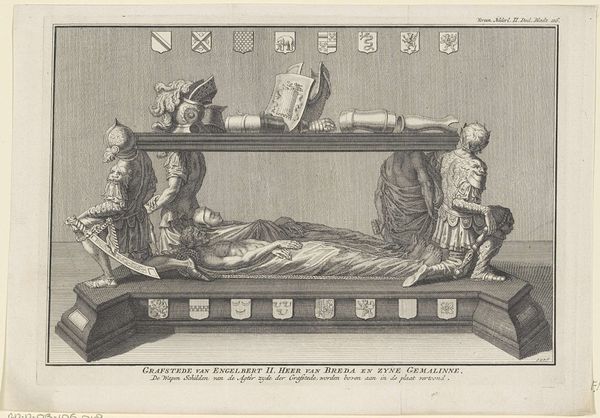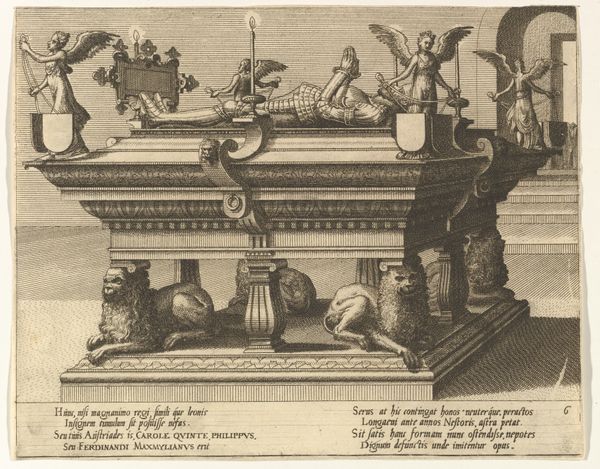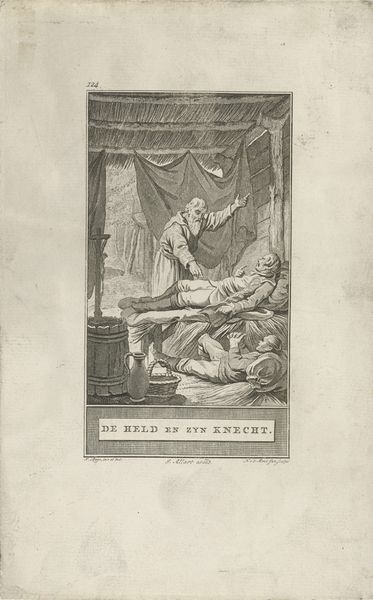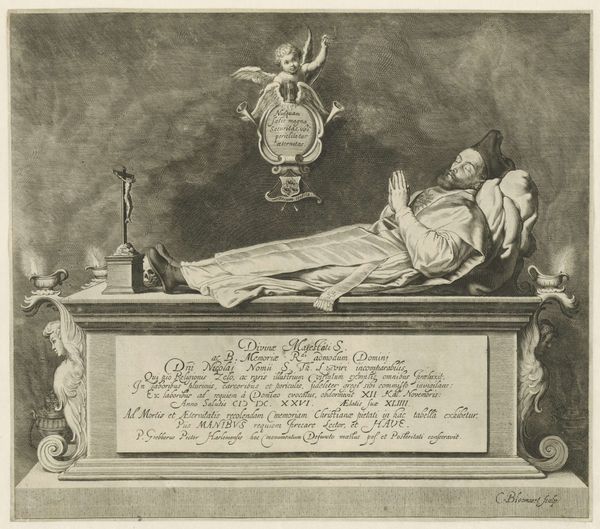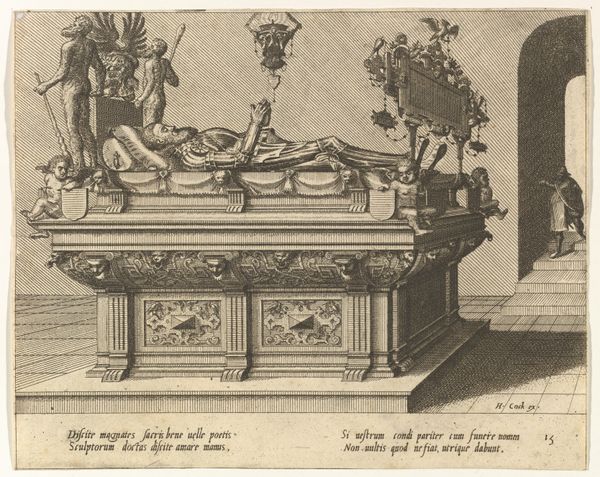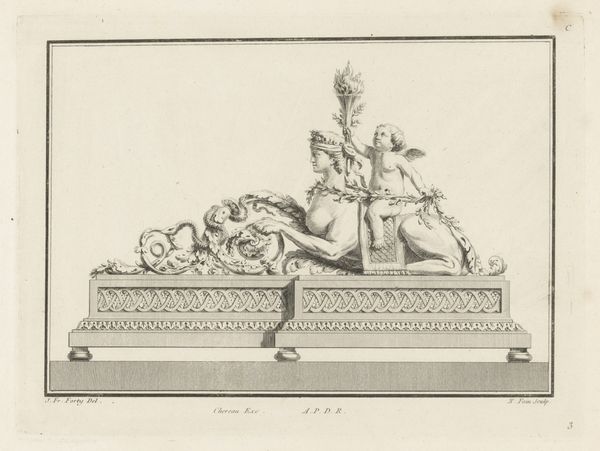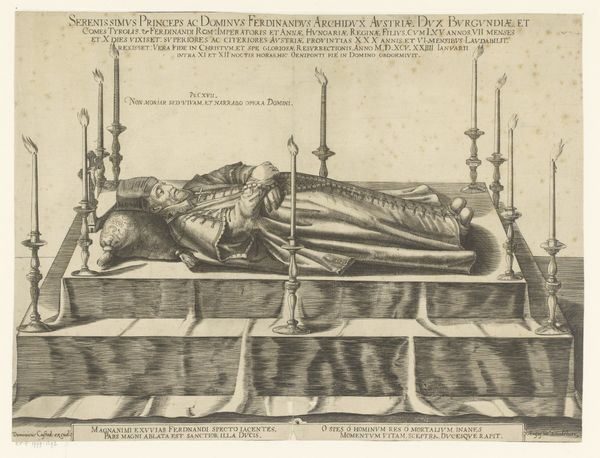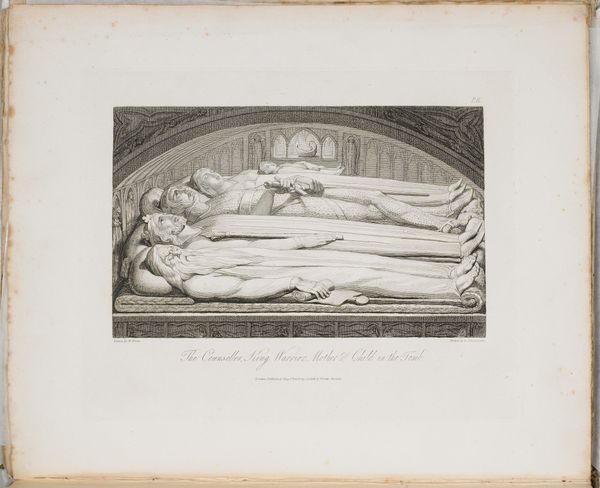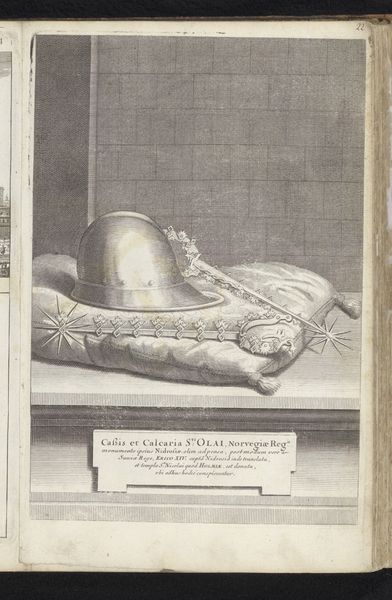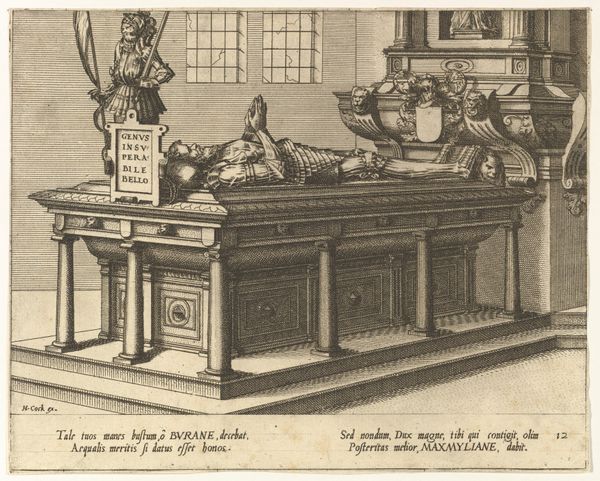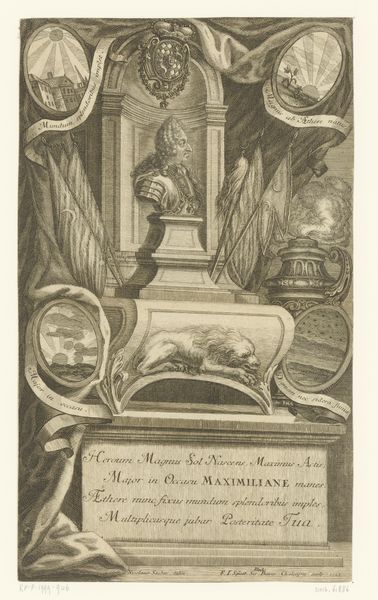
Grafmonument voor Engelbrecht II, graaf van Nassau-Dillenburg-Breda, 1504 17th century
0:00
0:00
anonymous
Rijksmuseum
metal, relief, engraving
#
baroque
#
metal
#
relief
#
figuration
#
history-painting
#
engraving
Dimensions: height 107 mm, width 148 mm
Copyright: Rijks Museum: Open Domain
Editor: We’re looking at a 17th-century engraving from the Rijksmuseum, titled "Grafmonument voor Engelbrecht II, graaf van Nassau-Dillenburg-Breda, 1504" by an anonymous artist. It depicts a grand tomb. What do you see when you look at this piece? How do you interpret its historical significance? Curator: I see more than just a tomb; I see a potent symbol of power and lineage, rendered through a distinct visual language that catered to its time. It evokes the visual and cultural politics of memorializing elites, specifically in the early modern era. The rigid, idealized depiction of the deceased contrasts sharply with the realities of mortality. Can we unpack whose stories are privileged, and whose are erased, through such representations? Editor: That’s a compelling point. I hadn’t considered the socio-political layers within what seems like a straightforward memorial. It's interesting to think about whose narratives are prioritized. Curator: Exactly. Consider also how this engraving, as a reproducible medium, amplified its message. It was about control as much as it was about grief, echoing a time when even death was carefully curated to assert authority. Who would this image serve, and how? These questions are crucial to deconstructing the intentions behind such artistic endeavours. How does this reframing sit with your initial interpretation? Editor: It definitely adds another dimension. Initially, I focused on the aesthetic; now I’m also considering the engraving’s function as a statement of power and a carefully constructed narrative. Curator: Precisely. Analyzing this engraving forces us to grapple with how images reinforce dominant ideologies and shape our understanding of history. Ultimately, it allows us to see the past through a critical, questioning lens. Editor: I'm walking away from this conversation seeing far more than just an engraved tomb, I'm seeing how art functions within historical narratives, and the cultural politics it represents. Thank you for sharing these crucial considerations.
Comments
No comments
Be the first to comment and join the conversation on the ultimate creative platform.
